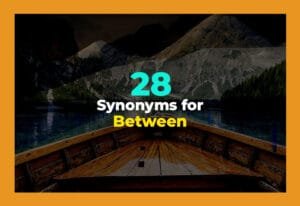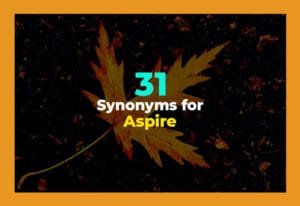You want to combine things smoothly and effectively, right? Whether it's ideas, teams, or data, knowing different ways to say “merge” can help you express yourself better. From unite to fuse, these top synonyms show how to bring parts together with style and clarity. Using the right word can make your message clearer and more interesting, whether you are writing or speaking.
1. Combine
Combine means to put two or more things together to form one. It is a simple and common word that describes the action of joining different parts into a whole. For example, in cooking, you combine flour, sugar, and eggs to make a cake. It can also be used in other areas, like "We will combine our ideas to create a better plan." The word shows that the parts come together but may still keep their individual features. Combine is easy to understand and is often used when you want to explain that things are brought together clearly and simply.
2. Unite
Unite means to bring people or things together so they act as one group. It often carries a feeling of strength and harmony. For example, "The team united after many challenges to win the game." It shows not just physical joining but also emotional or purposeful connection. When countries unite, they may form alliances to work together for peace or defense. Unite is a powerful word that emphasizes togetherness and shared goals, making it useful when you want to stress cooperation and common purpose.
3. Join
Join is a very common and easy word that means to bring two or more things or people together. You might join pieces of a puzzle or join a club with friends. It shows connection or linking in a straightforward way. For example, "She joined the two wooden boards with glue." Join is used in many situations, whether physical or social, and it is easy to understand for beginners. When you want to express putting things or people together, join is a safe and clear choice.
4. Fuse
Fuse means to melt or blend parts together to become one. This word suggests a deeper level of mixing where the original parts lose their separate identities. For example, "The metals fused together when heated." Fuse can also be used to describe ideas or feelings that combine closely, like "Their thoughts fused into one plan." Using fuse gives a strong sense that the parts cannot be separated easily afterward. It is a useful word when talking about joining that is more complete and lasting.
5. Blend
Blend means to mix things smoothly so they look or taste like one. This word is often used for colors, flavors, or sounds. For example, "The painter blended red and yellow to make orange." Blend suggests a soft and natural joining, where the parts mix well but keep a gentle balance. It's great when you want to describe a combination that feels smooth and harmonious. Blend is often used when the result is pleasing and seamless.
6. Integrate
Integrate means to bring different parts together so they form a complete and working whole. It often implies fitting different pieces together carefully. For example, "The new software integrates your emails and calendar in one place." It can also mean mixing people from different groups in a community. When you integrate, the parts work well together without losing their identity, creating a balanced system. This word is useful in technology, education, and society when you want to talk about working together smoothly.
7. Amalgamate
Amalgamate is a more formal word that means to combine or unite, especially in business or organizations. For example, "The two companies amalgamated to expand their markets." This word shows joining parts into one entity, often to improve strength or reach. Amalgamate sounds official and professional, and it is often used in legal or financial contexts. When you want to describe a serious or permanent joining, amalgamate is the right choice.
8. Incorporate
Incorporate means to include or bring parts into a larger whole. For example, "The final report incorporates suggestions from everyone." It also means legally forming a company. When you incorporate, you add something carefully and thoughtfully to create a new whole. It is often used when you want to show that something is included as part of a bigger system. Incorporate can be about ideas, materials, or formal groups, making it a versatile word for many situations.
9. Consolidate
Consolidate means to bring things together to make them stronger, more effective, or easier to manage. For example, "The company consolidated its offices to reduce costs." It suggests joining smaller parts into a stronger or simpler whole. Consolidate is often used in business, finance, and personal organization. When you consolidate, you make something better by combining separate pieces. It is a good word when you want to show improvement through joining.
10. Mix
Mix means to put different things together, often without a strict order. For example, "Mix the eggs and sugar well." It is a simple, everyday word used in cooking, chemistry, or social groups. Mix shows that parts are joined but not always fully combined or changed. It is useful when you want to describe putting things together quickly or casually. Mix is easy to understand and works well when the parts still keep some differences.
11. Meld
Meld means to blend or combine parts smoothly and naturally. For example, "The artist's styles melded into a unique masterpiece." It is often used for ideas, cultures, or styles. Meld suggests a joining where the parts flow together without rough edges. It is softer than fuse and implies a smooth and graceful connection. When you want to describe a natural and artistic combination, meld is a perfect choice.
12. Coalesce
Coalesce means to come together to form a single whole, often in a natural or gradual way. For example, "The small groups coalesced into a large movement." It is often used in science or social contexts to describe parts joining slowly but surely. Coalesce sounds gentle and gradual, and it is good when you want to explain a process that happens over time. It is a nice word to use when things come together by themselves.
13. Converge
Converge means to come from different directions and meet at a point. For example, "The rivers converge into one larger river." It can also mean ideas or goals coming together. Converge shows different parts moving toward unity. It is often used in geography, ideas, and events. This word helps explain joining that involves movement and direction toward a shared point. Converge is useful when parts meet after moving separately.
14. Link
Link means to connect two or more things. For example, "The chain links the gate to the fence." It is often used for physical or logical connections like websites or ideas. Link shows a clear connection but does not mean full merging. For example, "The article links to related topics." Link is great when you want to show joining without completely combining into one.
15. Attach
Attach means to fasten or join one thing to another. For example, "Please attach the file to your email." It shows a physical or digital connection, or sometimes emotional connection. Attach is about joining one thing onto another but usually keeping them separate. It is simple and common, used for many practical situations like documents, labels, or feelings.
16. Affix
Affix means to stick or fasten something to another thing. For example, "Please affix your signature at the bottom of the paper." It is a more formal word than attach and is often used with official documents, stamps, or labels. Affix shows a precise and careful way of joining. It helps emphasize that something is added securely and properly.
17. Connect
Connect means to join things so they relate, communicate, or work together. For example, "The internet connects millions of computers worldwide." Connect can be used for physical links, like wires, or for abstract relationships, like ideas or people. It shows a relationship or pathway between parts. Connect is a flexible word and helps explain how things or people come together to interact.
18. Assemble
Assemble means to bring parts together to build or create something. For example, "The workers assembled the new car." It shows putting separate pieces in order to form a whole. Assemble is often used for physical things but can also refer to people gathering, like "The crowd assembled in the square." It emphasizes organization and order in joining parts.
19. Meld (Repeated for clarity)
Meld means to blend or combine parts smoothly and naturally. For example, "Their ideas melded into a perfect plan." It is used for things like styles, cultures, or thoughts. Meld suggests a joining where parts mix well without losing their qualities. It is gentle and artistic, useful when you want to describe a smooth joining process.
20. Intertwine
Intertwine means to twist or weave things together closely. For example, "The vines intertwined around the tree." It shows a physical or figurative joining where parts wrap around each other. Intertwine is often used for objects like ropes or fingers but also for lives or ideas that are connected deeply. It suggests a strong, lasting connection.
21. Interlace
Interlace means to cross or weave parts together to form a pattern. For example, "The basket was made by interlacing strips of wood." It is similar to intertwine but often refers to neat, ordered weaving. Interlace shows structure and care in joining. It's good for describing physical connections that create strength or beauty.
22. Synthesize
Synthesize means to combine ideas or elements to create something new and original. For example, "The scientist synthesized data from many experiments." It is often used in science, writing, or music. Synthesize suggests careful joining to form a whole that is better or different from the parts alone. It is a creative and thoughtful way to join parts.
23. Marry
Marry means to join or combine two things closely and harmoniously. For example, "The chef married sweet and spicy flavors in the dish." It shows a perfect pairing where both parts work well together. Marry is often used figuratively and suggests respect for each part while creating something new. It's a warm and positive word for joining.
24. Bond
Bond means to join strongly, often emotionally or chemically. For example, "The team bonded after working together for months." It shows a deep connection that lasts. Bond can describe feelings between people or physical connections in materials. It suggests trust, strength, and closeness in joining.
25. Couple
Couple means to join two things together as a pair. For example, "The engine was coupled with the transmission." It shows a connection where two parts work closely for a purpose. Couple suggests a pair that fits well and functions as a unit. It is common in technology and relationships.
26. Affiliate
Affiliate means to officially connect or associate with a larger group. For example, "The local branch is affiliated with the national organization." It shows a joining where the smaller group keeps some independence but is linked to a bigger one. Affiliate is used in business, education, and clubs, and suggests a formal relationship.
27. Pool
Pool means to bring resources or efforts together for a shared goal. For example, "They pooled their money to buy the gift." It shows combining parts to create something more powerful or useful. Pool is often used in teamwork or finance and emphasizes cooperation and sharing.
28. Alloy
Alloy means to mix metals to create a stronger material. For example, "Bronze is an alloy of copper and tin." It shows a physical and chemical joining that improves strength or durability. Alloy is mainly used in science and manufacturing and suggests a permanent, useful combination.
29. Fuse Together
Fuse together means to join by melting or blending completely. For example, "The glass pieces were fused together in the kiln." It is a stronger version of fuse, showing full joining that cannot be separated easily. Fuse together suggests total blending into one solid form.
30. Cement
Cement means to make a connection or relationship very strong and lasting. For example, "The agreement cemented their partnership." It suggests building a bond that is difficult to break. Cement can be physical, like building materials, or figurative, like friendships or deals. It shows joining that creates stability.
31. Unite Forces
Unite forces means to join strength or effort with others. For example, "The two companies united forces to fight a bigger competitor." It shows cooperation for a common goal, especially in teamwork, battle, or business. Unite forces emphasizes working together powerfully.

Final Thoughts
Using different words for merge helps you say exactly what you mean. Whether you want to show simple joining, smooth blending, or strong connection, these 31 synonyms give you many ways to express it clearly. Try using these words in your writing or speech to make your ideas more interesting and clear. Understanding their meanings and examples will help you communicate better every day.









